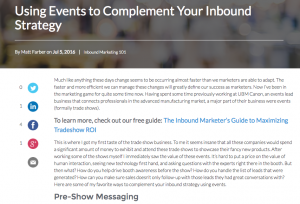
Millennials are expected to make up about 50 percent of all leadership positions in the next five years. Not only that, Millennials who are satisfied with their professional development opportunities are twice as likely to stay with a company then those who are unsatisfied. Investing in this generation and grooming Millennials for management improves a company’s retention rates and long-term stability.
Countless articles have speculated on what Millennials want in an ideal employer. Flexible scheduling, a positive company culture, advanced technology, unrestricted vacation days…throw in some bean bag chairs and a company bar, and you’ll have Millennials flocking to your company, right? But if you don’t offer this one thing, you’ll never keep the talent you worked so hard to attract.
What is the one thing Millennials want most at work?
According to a recent Gallup poll, a whopping 87 percent of Millennials want professional development opportunities.
Like any other generation, Millennials possess inherent strengths and weaknesses. Though incredibly savvy with technology, one study found they lagged behind their international peers in literacy, math, and technological problem-solving. Because of their age and limited managerial experience, Millennials are also likely to lack soft skills like diplomacy, communication, listening, patience and relationship building. These shortcomings further support the case for why organizations must offer professional development opportunities for this population.
Tips for Creating Professional Development Opportunities for Millennials
1. Create a Formal Process for Identifying Top Talent
The first step is to decide which employees show the most promise. A useful assessment may include:
- A thorough examination of the employee’s past experience and behaviors
- A look at how the employee behaves on the job
- A look at why he or she behaves this way
- When and where the employee is most likely to behave in a similar fashion
One way to identify high potential employees is to use an third-party provider who uses a variety of methods to collect robust objective data, including:
- Behavioral interviews
- Collecting feedback from direct reports, peers and managers
- Personality tests
- Simulations to assess performance
When assessing the potential of your employees, be sure to consider what success looks like for that position and develop a profile that describes those characteristics in behavioral terms.
Many companies identify high performing employees, but fail to consider that employee’s aspirations to move into a leadership role. A third-party provider can help you avoid this common mistake and, because it is not unusual for us to have biases, provide a more objective perspective when evaluating your employees.
2. Make Learning Visual and Stimulating
Since many Millennials grew up playing interactive games, they usually respond well to exercises that are visual and stimulating. Most Millennials are fairly tech savvy. Try having your training and problem solving exercises available via a variety of technologies including laptops, tablets and other mobile devices.
Self-directed online learning course and games can help prepare Millennials for leadership positions, for example. In addition, providing trainees opportunities to earn virtual badges they can share on their social media profiles or concrete prizes like gift cards or tablets can keep Millennials engaged — and having fun.
Another option is action learning — putting employees together in small groups and tasking them with solving a real business issue. This approach helps participants think critically and work together while solving problems and developing leaders.
3. Keep Training Sessions Short, But Frequent
Because Millennials grew up in the middle of the technological revolution, they are accustomed to the blindingly fast, instantaneous nature of the world today. This is an excellent quality, but it also means that, like most people today, their attention spans are dwindling. Keep training sessions shorter but more frequent.
4. Use a Variety of Formats
Mix things up, maintain interest and inspire engagement with webinars, video conferencing, self-directed learning, in-person training, role-playing, panel discussions, and more. Millennials appreciate using all the tools at their disposal and will likely retain information better when taught using their channels.
Consider the following formats:
- Virtual instructor-led training programs work well for employees who are auditory learners or when concepts need verbal explanations
- Face-to-face simulations work well when teams are co-located and participants need to learn soft skills like communication and conflict resolution
- E-learning programs are best used when significant interaction isn’t required among participants, the content being discussed isn’t likely to generate questions or discussion or when training needs to occur across different time zones
- Massive Open Online Courses (MOOCs) are best for knowledge acquisition and when training needs to be flexible and on-demand. This option is also appropriate if you have participants who are at different levels of knowledge.
No generation has been as relentlessly stereotyped as the Millennials. They’ve been called lazy, impatient, and entitled. They’ve also been called visionary, strategic, and ambitious. Regardless of your opinion, their takeover of the U.S. workforce means every organization must vie for Millennial talent.
Providing Millennials at your organization with the appropriate training and learning opportunities in the formats they are most comfortable with as well as having a formal process to identify your top performers can help your company make the most out of this promising generation.
Business & Finance Articles on Business 2 Community
(77)
Report Post







